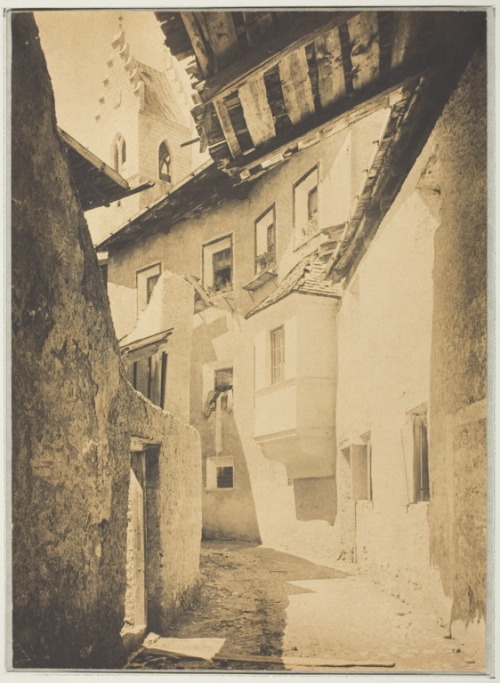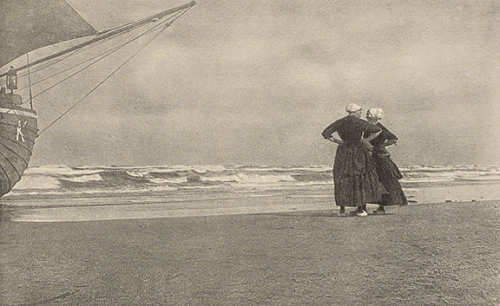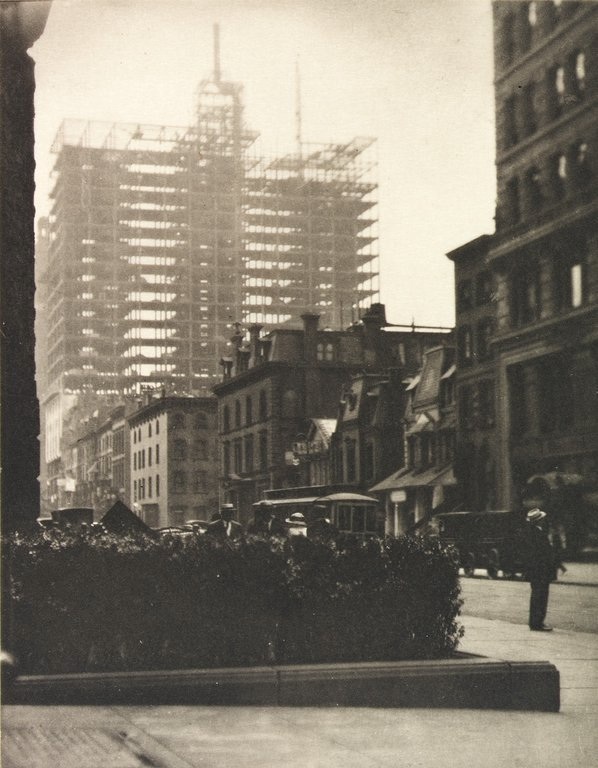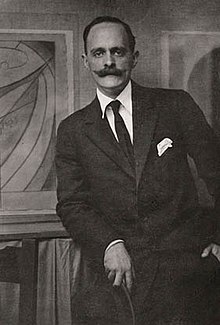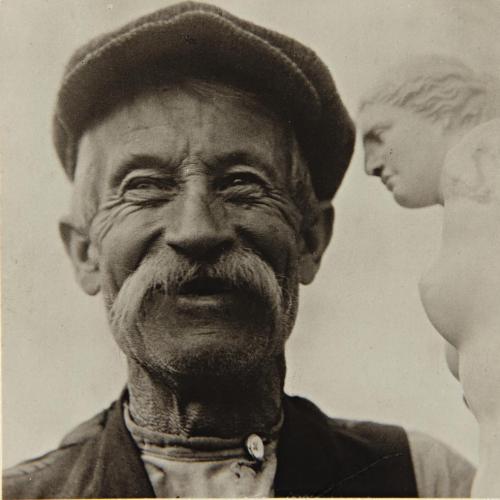Wednesday, June 27, 2012
Alfred Stieglitz: Photographs
Alfred Stieglitz has been renowned for his introduction of modern European art to America and for his support of contemporary American artists, but he was first and foremost a photographer. His photographs, which span more than five decades from the 1880s through the 1930s, are widely celebrated as some of the most compelling ever made. Alfred Stieglitz: Known and Unknown, on view at the National Gallery of Art West Building June 2 through September 2, 2002, presented 102 of Stieglitz's photographs from the National Gallery's collection. Encompassing the full range and evolution of his art, the exhibition included many works that had not been exhibited in the last fifty years. It highlighted less well-known images in order to demonstrate how they expand our understanding of the development of his art and his contributions to 20th-century photography.
The exhibition, which was the culmination of a multi-year project on Stieglitz at the National Gallery, also celebrated the publication of Alfred Stieglitz: The Key Set, a definitive study of this seminal figure in the history of photography. Consisting of 1,642 photographs, the key set of Stieglitz's photographs was donated to the National Gallery by Georgia O'Keeffe in 1949 and 1980 and contains the finest example of every mounted print that was in Stieglitz's possession at the time of his death. It was the largest and most comprehensive collection of his work in existence.
The exhibition, which was arranged chronologically, provided new insights into the development of Stieglitz's art and demonstrates how he continuously investigated the technical and expressive capabilities of the medium.
Germany, 1886-1890:
Born in Hoboken, New Jersey, Stieglitz began to photograph, probably in 1884, while a student in Germany. The medium captivated and challenged him as nothing else had done before. His teacher, Hermann Wilhelm Vogel, a highly respected photographer, scientist, and professor at the Königliche Technische Hochschule in Berlin, instilled in him a profound appreciation for the science and practice of the process. At Vogel's direction, Stieglitz tackled a wide variety of subjects and exhaustively explored the relationship of light to photography.
These technical experiments, including A Street in Sterzing, The Tyrol (1890), on view in the exhibition, are among his most accomplished early works. Stieglitz was also influenced by contemporary German, Dutch, and Austrian painters, several of whom were close friends. He strove to replicate their anecdotal, narrative, and picturesque subject matter in such photographs as The Harvest, Mittenwald (1886), also on view in the exhibition.
1890-1904:
In the fall of 1890, after nine years of study in Germany, 26-year-old Stieglitz returned to New York and quickly established himself as a leading artistic photographer. He continued to draw inspiration from contemporary painters, but his scope widened considerably to include the French artist Jean-François Millet, the German Max Liebermann, and the American James Abbott McNeill Whistler. Like other photographers of the time, Stieglitz began to use a small, hand-held camera, but he utilized every means available to him to transform his images, as he wrote, from mere "photographs [into] pictures." He radically cropped his negatives to eliminate distracting and extraneous elements from his compositions. He also often enlarged them to make prints as big as twenty-one inches wide and to retouch portions of the pictures easily. Further appropriating the materials and palette of a painter, he also made carbon, gum bichromate, and photogravure prints in charcoal gray and brown, even red, green, and blue hues. And he carefully matted and framed his finished prints so that they would command attention in the large international exhibitions.
Several of the photographs, including Winter-Fifth Avenue (1893),
Gossip-Katwyk (1894),
and A Wet Day on the Boulevard, Paris (1894), were in their original mats and framed as Stieglitz would have presented them in the 1890s.
291, 1905-1917:
In 1905 Stieglitz opened a gallery, which came to be called 291 (from its address on Fifth Avenue in New York), where he exhibited the work of his elite group of artistic photographers, the Photo-Secession (founded by Stieglitz in 1902). In 1908, in order to initiate a dialogue between contemporary photographers and painters, he began to show the work of leading European modernists, including Paul Cézanne, Henri Matisse, Pablo Picasso, and Constantin Brancusi. These artists introduced Stieglitz to new ideas of color, form, and abstraction that deeply influenced his art.
In a series of photographs of New York from 1910, such as Outward Bound,
The Mauretania,
and Old and New New York, Stieglitz abandoned the soft focus of his work from the turn of the century and revealed the new, bolder use of form that he had learned from these artists.
Stieglitz continued his investigation of New York in the spring of 1915 in a series of photographs made out of the back window of 291. Influenced by Picasso and Braque, he sought to eliminate a sense of three-dimensional space and traditional one-point perspective. In these precisely constructed and elegantly realized photographs, Stieglitz carefully dissected the planes of the rooftops and buildings in order to reveal both the physical mass of the city and its psychological weight.
The portraits Stieglitz made at 291 represent a significant advancement in his art and demonstrate the dialogue between modern painting and photography that he sought to construct.
In Marius de Zayas (1913)
and Georgia O'Keeffe (1917) he placed the artists in front of their own works, echoing the forms from the canvas in his own depictions of them. Fascinated by Picasso, whom he met in 1911 and exhibited that same year and again in 1915, Stieglitz photographed several friends and family in front of the Spanish artist's works, as, for example, in Kitty at 291 (1915).
Georgia O'Keeffe, 1918-1921:
The years from 1918, when Georgia O'Keeffe moved to New York, until 1937, when Stieglitz put his camera away because of poor health, were the most prolific ones in his career. O'Keeffe inspired in him a creative passion he had never known before, and within the first three years that they lived together he had made more than 140 studies of her (the key set contains 331 photographs of O'Keeffe taken between 1917 and 1937). He called his photographs of her a "composite portrait," and his aim was to document not only his understanding of O'Keeffe's personality but also the larger concept of "womanhood." Stieglitz soon applied the lessons he had learned from photographing O'Keeffe to his portraits of other people.
In his series of studies of Helen Freeman (1921/1922), for example, he progressed, as he had done with O'Keeffe, from the formal studies of face and shoulders to more intimate photographs, and he also recorded her hands as an index of her personality.
Lake George, 1920s:
A lighthearted, playful quality, coupled with a more daring experimentation, entered Stieglitz's work in the 1920s. With the closure of 291 in 1917, Stieglitz was freed from his responsibilities as a gallery director and had more time to devote to his own art. During the 1920s he and O'Keeffe spent several months each year at Lake George--his family's summer home in New York's rolling Adirondack Mountains. Here he vigorously investigated the most amateurish aspect of photography, the snapshot. Made with his small hand-held 4 x 5 or 3 1/4 x 4 1/4 inch cameras, these casual and spontaneous compositions record the long, languid days of summer, as seen in
Bly and Venus (1920),
Georgia O'Keeffe and Waldo Frank (1920), Katharine (1921), and Rebecca Salsbury Strand (1922).
In the late 1910s and early 1920s, encouraged by the work of American artists Arthur Dove, John Marin, and O'Keeffe, Stieglitz, for the first time in his art, began to explore the rural American landscape and photographed the surrounding vistas at Lake George. It was also during these years that Stieglitz made his series of abstract and evocative studies of clouds. Using a small hand-held camera that could be easily pointed at the zenith of the sky, he made photographs without a horizon line to anchor the viewer, thus creating a sense of disorientation and abstraction. He strove to make a new language for photography that was less dependent on subject matter, more intuitive and expressive of a mood or emotional state.
New York, 1927-1937:
In the early 1930s Stieglitz rediscovered a subject that had inspired him throughout his career--New York City--but his photographs of it from these years have a formal strength and lucidity unknown in his previous work. He was inspired by the views from his windows high up in the newly constructed Shelton Hotel, where he and O'Keeffe lived from 1925 to 1936, as well as from his last gallery, An American Place, at 509 Madison Avenue, which he directed from 1929 until his death in 1946. At various times of the day and using different lenses, he photographed the visual spectacle of the constantly changing city as seen in his series of photographs, From My Window at An American Place, taken from 1930 to 1932. When Stieglitz exhibited these photographs he grouped them into series--two of which have been recreated in the exhibition--that charted both the growth of the skyscrapers and the more subtle but constantly changing patterns of light and shade. Once the buildings were completed, though, Stieglitz generally lost interest in photographing them for the sense of change was no longer present.
Lake George, 1929-1937:
In the early 1930s, O'Keeffe reappeared as a major subject in Stieglitz's art, but the distance between them, as seen in several studies on view in the exhibition, is obvious. With their metallic sheen, deep blacks and complex geometry, these photographs are among his strongest portraits of O'Keeffe and also his most poignant. As he spent more time alone at Lake George, the farmhouse and its surrounding fields, trees, and lakes once again became the focus of his art. Like his photographs of New York from the same time, these are rigorous but also quiet and intensely autobiographical works.
Curator
The exhibition was organized by the National Gallery of Art, Washington. The curator was Sarah Greenough, the Gallery's curator of photographs and a noted expert on Alfred Stieglitz. It was on view at the Museum of Fine Arts, Houston, from October 6, 2002, through January 5, 2003.
PUBLICATIONS:
Alfred Stieglitz: The Key Set: This two-volume catalogue--in which all 1,642 photographs in the Gallery's key set are beautifully reproduced--includes an introductory essay by Greenough and appendices on Stieglitz's techniques and processes. It presents a wealth of significant new research, and, for the first time, an accurate record of the development of Stieglitz's art.
A new edition of the Gallery's award-winning 1983 book Alfred Stieglitz: Photographs and Writings, which had long been out of print was also issued.
